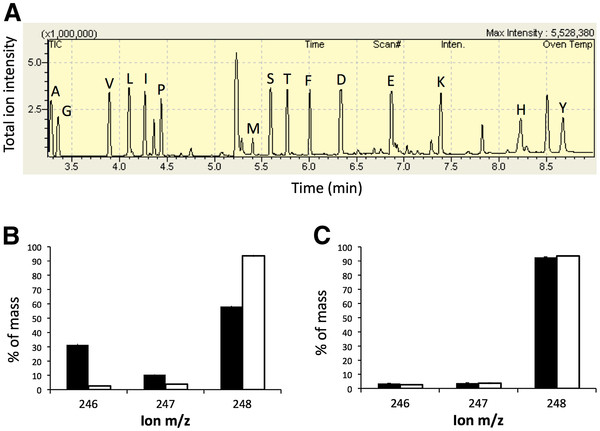Figure 3 .
GC-MS technique to determine if citrate was incorporated into the amino acids of biomass during glucose growth. Amino acids from cells grown on 100% U-13C-glucose with or without citrate (natural abundance; ~99% 12C) were analyzed via GC-MS. (A) A representative GC-MS chromatogram of total ion intensity indicating the presence and separation of derivatized amino acids. (B) Mass spectra for an example fragment (from glycine) when the citrate-consuming A-3 was grown on glucose with citrate (black) or without (white), and (C) when A+6 was grown on glucose with and without citrate. For each amino acid, one or more characteristic mass fragments are observed whose mass distribution spectra shows the percentage of each mass relative to the total of all ions for that fragment. The example illustrates peaks 246 to 248 for the M-57 fragment of glycine, which represent the two carbons in glycine that were either both 12C-labeled, one 12C and one 13C, or both 13C-labeled, respectively. Across all amino acids, there was not a significant decrease in 13C-labeling from glucose except in the A-3 line where unlabeled 12C citrate was clearly incorporated into biomass. Error bars represent standard deviations of three biological replicates.

